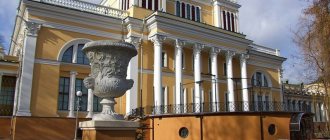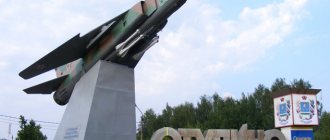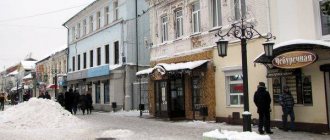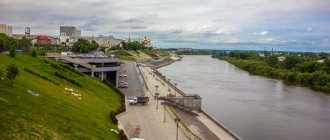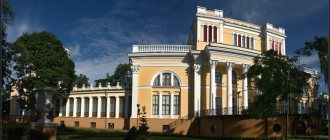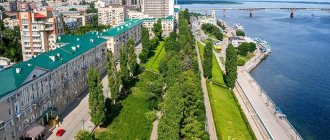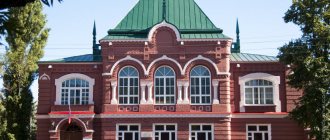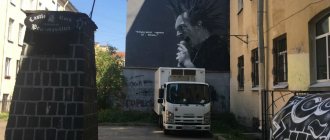According to archaeologists, the Ulyanovsk region was one of the first to be inhabited by people 100 thousand years ago during the Paleolithic era. Later, tribes of the Imenkovo culture, Bulgars, Tatars and other peoples lived there. The modern borders of the region began to take shape in the 40s of the 17th century, when the construction of the fortress of Sinbirsk, later Simbirsk (presumably named after one of the Bulgar khans) began.
In the 18th century, the city became the center of the Simbirsk province, which was part of the Kazan province. Catherine the Second, Emelyan Pugachev, Suvorov and Pushkin visited there, but the settlement gained the greatest fame thanks to its most famous native, Vladimir Lenin. In his honor, the city of Simbirsk was named Ulyanovsk, and the region became Ulyanovsk.
Now there are monuments reflecting its history, including the Lenin Memorial, which has no analogues in the world, ancient churches and modern attractions.
For ease of route planning, we have marked all the mentioned attractions on the city map:
Historical sites and museums
Lenin Memorial
Address: Lenin Square, building 1 Telephone: Opening hours: Mon-Fri 09:00-19:00, Sat-Sun 10:00-18:00 Cost: 150 rubles
One of the largest historical and museum complexes in the Volga region. It is located on a street called Streletskaya (now Lenin Square is located in its place), where a statesman was born in one of the houses.
The building was built for the 100th anniversary of the birth of Vladimir Ilyich. The Lenin Memorial is the only object in the world that reflects Lenin’s entire life as a politician and scientist. The museum fund includes more than 70 thousand items, which include original items of the Ulyanov family, documents, photographs and other exhibits dating back to different periods of Russian history.
House-monument to I. A. Goncharov
Address: ¾ Novy Venets Boulevard Telephone: Opening hours: Tuesday-Sunday 10:00-17:30 Cost: 60 rubles for adults, students 30 rubles
Ivan Aleksandrovich Goncharov, a domestic writer, critic, state councilor and educator, was born in Simbirsk and lived in the city for up to 10 years, after which he went to study in Moscow.
The house-monument to this outstanding man was founded back in 1912, but it was completed only after the revolution.
Now there are art and local history museums there. They talk about the history and development of the Ulyanovsk region, and the exhibitions include works of domestic and foreign artists, graphic artists, sculptors (Bryullov, Levitsky, Lagilliere).
Historical and Memorial Center-Museum of I. A. Goncharov
Address: st. Lenina, 138 Telephone: Opening hours: Tue-Sun 10:00-18:00 Cost: adult 60 rubles, pensioners and students – 30 rubles
The museum opened in 2012 in honor of the 200th anniversary of the birth of the writer. It is located in the house where Goncharov was once born and lived, and was created on the basis of a historical and literary complex that existed since 1982.
The new exhibition is much larger than the old one and includes several collections dedicated to Goncharov and the heroes of his works, as well as the museums “Merchant's Basement” and “History of the Simbirsk City Clock”. The basis of the complex is a unique collection of objects that belonged to the writer and his relatives.
House-Museum of V. I. Lenin
Address: st. Lenina, 70 Telephone: Opening hours: daily 10:30-17:30 Cost: adults 100 rubles, students 50 rubles, children free
The first museum in Russia, created in honor of Vladimir Ilyich Lenin, is located in the house that his family owned in the late 19th century. The Ulyanovs bought it from the widow of the titular councilor Molchanov, after which they lived in it for more than 10 years. In 1887, after the death of the head of the family and the execution of Vladimir's brother Alexander, the family sold the house and left Simbirsk.
In 1923, the historical and revolutionary Lenin Museum was opened in the building, and in 1928 it was restored and transformed into a memorial that accurately reflects the environment and conditions in which Vladimir Ilyich’s family lived.
Museum "Simbirsk Classical Gymnasium"
Address: st. Spasskaya, 18 Phone: + Opening hours: 10:00-17:00 daily Cost: adults 100 rubles, students 50 rubles, children free
Simbirsk is one of the first Russian cities where secondary education for children was introduced. The museum is located in a former gymnasium building, which was built according to the design of the famous Tuscan architect.
The exposition of the memorial tells about the formation of the educational process in Russia, and the setting takes the visitor into the atmosphere of a school at the end of the 19th century. The interiors of the classrooms, assembly hall, and physical education classroom were recreated with the most accurate accuracy. Here you can look through old textbooks and feel like a high school student.
Museum "Simbirsk Merchants"
Address: st. Lenina, 75A Telephone: Opening hours: daily 09:00-17:00 Cost: adults 100 rubles, students 50 rubles, children free
Simbirsk was once one of the most influential merchant cities, and the museum is dedicated to the best representatives of this class. The exposition is located in the building where there was a retail outlet of famous entrepreneurs of the city - Kuzma and Lyubov Zharkov.
It talks about the formation of the Russian merchant class, its development and role in the development of Simbirsk and the entire empire, as well as the everyday life and traditions of merchants. The exhibits include original photographs, documents and objects, many of which belonged to prominent people in the city's industrial and commercial activities.
Museum "Simbirsk Photography"
Address: st. Engelsa, 1B Telephone: Opening hours: daily 10:00-17:00 Cost: 100 rubles, students 50 rubles, children free
The museum building is located on the territory of an ancient building, where in 1904 the studio of the pioneers of Russian photography Nikanorov and Kholevin operated. It accurately recreates the interior of a photo salon of the late 19th century, which consists of original items that belonged to the family of a hereditary photographer.
Exhibits include vintage photographs, cameras and albums.
Visitors can take a photo as a souvenir in vintage style.
The next exhibition pavilion houses an exhibition of contemporary photography.
Museum "Fire Department of Simbirsk-Ulyanovsk"
Address: st. Lenina, 43 Telephone: Opening hours: daily 10:00-17:00 Cost: adults 100 rubles, students 50 rubles, children free
The complex is located in the restored Fire Convoy building, which was erected in 1874. Its entire history is connected with fire protection - at various times it housed units and detachments of professional firefighters, stables, workshops for repairing technical equipment, and since 1979 there has been an exhibition dedicated to this activity.
The exhibition includes unique exhibits - equipment for extinguishing fires, from horse-drawn barrels of the 19th century to Soviet-era equipment, documents, photographs and interactive dioramas.
Historical and architectural complex “Simbirskaya Zasechnaya Line”
Address: st. Leva Tolstoy, 43A Telephone: Opening hours: daily 10:00-17:00 Cost: adults 100 rubles, students 50 rubles, children free
During the time of Tsar Alexei Mikhailovich, the Simbirsk serif line separated and protected Russian land from enemy raids, and now there is a unique historical and architectural museum on this site.
It features a defensive fortress and an earthen rampart, which were restored based on historical analogues and remains found by archaeologists in Simbirsk. The exhibition includes samples of Russian weapons, ancient documents, maps, diagrams and decrees.
On the territory of the complex there is a model of a water mill that was located on the river.
Museum-estate of urban life in Ulyanovsk
Address: st. Lenina, 90 Telephone: Opening hours: daily 10:00-17:00 Cost: adults 100 rubles, students 50 rubles, children free
The exhibition is located in the former house of the priest of one of the Simbirsk churches - Anaksagorov - and illustrates the residential house of a middle-income urban resident of the late 19th - early 20th centuries. It includes interior items, a collection of porcelain accessories and lighting fixtures.
In 2013, the exhibition was supplemented with acoustic and lighting effects, which are designed to create the most realistic environment.
One of the exhibits is an old telephone, through which visitors can find out secular news from Simbirsk.
Where else can you go?
Children are the greatest explorers in our world, so the more we expand the boundaries of this world for them, the more developed they will become. In addition, not only children, but also parents, who are increasingly asking the question: where to go with their children, need a break from their usual surroundings and everyday life? What exactly can our city of Ulyanovsk offer?
It is not difficult to answer this question for residents of a large city, since the variety of services offered is amazing - these include amusement parks in shopping centers, and all kinds of master classes, and children's cafes, a zoo, a circus, a puppet theater, a horse yard, a dolphinarium, and a swimming pool.
But a small city also cares about the comprehensive development of its small residents. On the Internet, as a rule, there is a page with a name like “children’s poster of the city of Ulyanovsk,” where all upcoming or ongoing events for children are collected.
Another great invention of recent years is family clubs, which organize leisure time for children and adults, based on the city’s resources. Staging performances for children of different ages, organizing holidays, readings and tea parties in a sincere family atmosphere, excursions to enterprises (post office, theater backstage, factory, fire station), where you would never get to with a child on an individual basis.
The city of Ulyanovsk also has its own attractions. Of course, a child is unlikely to enjoy a long excursion, but a dosed study with a brief but vivid description of the main events is exactly what is needed.
Even if their historical value will not be so interesting to children, it is necessary to introduce them, tell them and show them the riches of their native land - be it a beautiful landscape, industrial buildings or ancient buildings, beautiful buildings - it wonderfully develops their horizons and trains their memory.
We are sure that every parent in our city will be able to remember places where they can have fun and interesting time with their child, and share with us. Where do you go with your children?
https://citiesdays.ru/
Parks and monuments, streets
Boulevard New Venets
A pedestrian street in the city center, which is often called the “Ulyanovsk Arbat”. It is located at the highest point of Ulyanovsk Mountain, overlooking the river, the Imperial Bridge and city areas.
In ancient times, on the site of the boulevard, Bogdan Khitrovo built a Kremlin, which became the first building of the city and stood until the end of the 18th century, gradually growing into city blocks.
Near the New Crown are the largest attractions of Ulyanovsk: the Lenin Memorial Complex, the Goncharov House-Monument, the Palace of the Book.
Monument to Bogdan Khitrovo
Address: Square of the 100th anniversary of the birth of V.I. Lenin
Bogdan Matveevich Khitrovo is an official from the time of Tsar Alexei Mikhailovich, who is the founding father of the former Simbirsk. In 1648, he was sent by the emperor to erect abatis and defensive structures on the Volga, where the settlement was founded.
Monument to the letter "Y"
Address: Venets Boulevard near the regional scientific library
The monument was erected in 2007, but the idea of its creation appeared much earlier - in 2005, when city historians organized a holiday dedicated to the 200th anniversary of the letter E. The project was prepared by local artist Alexander Zinin.
This is an exact copy of the letter that was first printed on page 166 of Aonid's almanac in the word “tears”.
Singing Fountain
Address: Square of the 100th anniversary of the birth of V.I. Lenin
The fountain was opened in 2008 for the city's birthday. In the evening, the lights and music turn on, which turns the streams of water into a fabulous, calming spectacle.
Monument to Oblomov's sofa
Address: Goncharov Square not far from the monument to the writer
The sofa on which the hero of Goncharov’s most famous novel reclined was installed in 2005 in Ulyanovsk.
When making the sculpture, the authors were guided by museum exhibits and illustrations of furniture from the century before last. In 2004, Oblomov’s slippers were forged by craftsmen at a local forge and installed next to the sofa. In the corner there is an iron cabinet with a pre-revolutionary edition of the work.
wind organ
Address: Lenin Square, 6 (embankment near the Philharmonic)
The design is a little unfinished and installed in a windless place, so the organ cannot “sing” in the wind, but it has turned into an original decoration of the square and a favorite place for photographs.
Monument to the Simbirtsit stone
Address: st. Spasskaya, 19/9
Simbirtsit, or “stone sun,” is an unusual ornamental stone that is found only in two places in the world - in Argentina and the Ulyanovsk region.
It is endowed with healing and miraculous properties - it is said that it can relieve stress and bring good luck. Externally, the mineral slightly resembles amber and has a reddish-brown color with shiny veins.
Imperial Bridge
Coordinates: 54.315983; 48.442236
The decision to build a bridge across the Volga in Simbirsk was made at the end of the 19th century after the visit of Russian Prime Minister Stolypin. Construction was delayed several times due to fire and landslide; the opening took place only in 1916, and in honor of the 300th anniversary of the House of Romanov, the bridge was named Imperial.
The length of the bridge is more than 2 kilometers, the height of the navigable span is 13.8 meters. On the northern side, near the right bank, a cross was erected in memory of the passengers of the ship "Alexander Suvorov" who died in 1983.
Churches and temples
Spaso-Voznesensky Cathedral
Address: st. Ulyanovskaya, 2 Telephone: Opening hours: daily 7:00-17:00
In the 90s of the last century, there was only one functioning cathedral on the territory of Ulyanovsk, which did not belong to the Orthodox diocese. At first it was planned to restore the Trinity Cathedral near Lenin Square, but then the authorities decided to build a new church.
In 2015, the official opening took place, which was attended by Patriarch Kirill. The temple is made in the Baroque style and blue, with a capacity of 2 thousand people.
Evangelical Lutheran Church of St. Maria in Ulyanovsk
Address: st. Iron Division, 20 Telephone: Opening hours: daily 900-18:00
The Lutheran community has existed in Ulyanovsk since the end of the 18th century. But it was only in 1847 that the first church was erected.
Throughout its existence, it was closed and rebuilt several times, and in 1994 it acquired its modern appearance.
One of the main attractions of the church is the organ of the Marburg Chapel, which the parishioners received as a gift from Germany.
Church of All Saints in Ulyanovsk
Address: st. Ulyanovskaya, 2 Telephone: Opening hours: daily 07:00-16:00
The wooden church was erected in 1996 near the construction site of the Ascension Cathedral for practical purposes. The creation of the main church of Ulyanovsk proceeded slowly, and all funds collected from the parishioners of the Church of All Saints had to be used for construction needs.
Now it is operational and is part of the cathedral complex under construction.
The relics of Andrei Simbirsk, found in 1998, are kept in the church.
Mahalla Mosque No. 1
Address: st. Federation, 37 Telephone: Opening hours: daily 09:00-18:00 Website: https://www.mahalla1.ru
The Mahalla Mosque is one of the main objects and meeting place for Muslims living in Ulyanovsk.
Not only services are held here, but also cultural and educational events dedicated to Islam, religious practices and reading the Koran
Holy Resurrection-German Cathedral
Address: Gogol Lane, 11 Opening hours: daily 07:30-18:00
One of the oldest churches in Ulyanovsk, which was built at the beginning of the 18th century. During the years of Soviet power it was closed, the building housed the state archive, and in 2003 it returned to the possession of the Orthodox diocese.
The church was restored - the builders recreated the ancient bell tower, which was dismantled in the 30s.
RunGo: routes for jogging
Platform:
Android, iOS
True running enthusiasts do not forget about sports even when traveling. In this application you can find scenic routes to popular cities around the world. Combine business with pleasure and go for a run around the sights. RunGo has a voice navigator that will help you not get lost in a new area and enjoy the views of the city without being distracted by your smartphone screen.
Photo: istockphoto.com
Entertainment
Ferris wheel
Address: Victory Park Opening hours: 10:00-22:00 Cost: 150 rubles for children, 200 rubles for adults
The attraction is located in Victory Park, the height is 40 meters. It was built in 2022 on the site of an old wheel, and allows you to admire the landscapes of Ulyanovsk from a bird's eye view. You can ride the Ferris wheel in a closed cabin or on an open platform with comfortable chairs.
The attraction operates in summer and winter.
Sports and entertainment complex "Leninskie Gorki"
Address: Stepan Razin descent, 33 Telephone: Opening hours: 10:00-22:00 Cost: 250-700 rubles
Leninskie Gorki is a year-round sports complex where you can go snowboarding, alpine skiing or tubing. The length of the tracks is 400 and 600 meters, and the elevation difference in some places reaches 1 km.
The complex has several lifts that allow visitors to climb the slopes, equipment rental points, and a cafe. Qualified trainers work.
Musement: a pocket guide
Platform:
Android, iOS
If you don’t know what to do or where to start, this application will help you not to get lost both in the world’s largest capitals and in less popular tourist cities. Here you can see a list of attractions and museums, bars and restaurants, places for walking, relaxing and training. Musement currently supports about 350 destinations around the world, and for the 25 most popular cities it offers a personalized travel plan based on the user's preferences.
Attractions in the surrounding area
Civil Aviation History Museum
Address: st. Aviatsionnaya, 20A Telephone: Opening hours: Tue-Fri 10:17, Sat-Sun 10:16 Cost: 100 rubles
Ulyanovsk is considered the center of Russian aircraft manufacturing, where the majority of civil and military aircraft are produced.
The Aviation Museum was opened in 1983, its total area is 18 hectares, and the exhibition consists of 4 thousand objects, most of which are originals. Among the particularly valuable ones are the ANT-4 - the world's first heavy all-metal bomber, the TU-104 jet airliner and the TU-144 supersonic airliner.
Yulovsky Pond
Coordinates: 53.967, 46.5201 Inzensky district, Yulovo village How to get there: from Ulyanovsk along the P178 highway west to Ureno-Karlinsky, where turn left and follow to Yulovo
Yulovsky Pond is a man-made natural monument, created 100 years ago by order of the local landowner Yulov. Initially, it was an ordinary dam, but over time it became a protected area with a unique flora and fauna.
The length of the pond is 2 km, width 500 m, and it is fed by the waters of the Chernaya River.
Yulovsky Pond has the status of a natural landmark of regional significance.
White Lake
Coordinates: 53.11812 46.585016 Nikolaevsky district How to get there: along the Ulyanovsk-Moscow R-119 highway to the Nikolaevka village stop
The reservoir received its name due to its exceptionally clean water with slight mineralization and white sand at the bottom. The lake is fed by groundwater and precipitation, but regularly cleans itself.
Sometimes the surrounding area is called the corner of Finland, since its natural features are more typical of the northern regions.
Black Lake
Coordinates: 54.1758 48.2056 Address: Ulyanovsk, Zasviyazhsky district
Black Lake is an ecological reserve located on the left bank of the Sviyaga River. The area of the reservoir is about 7 hectares, the maximum depth is 2.4 meters. It is fed by the underground waters of the Sviyaga River and the channels flowing from it.
Several hundred plants grow on the territory of the lake, including: the rare lady's slipper, round-leaved wintergreen, and broadleaf sedum. There are many animals: weasels, muskrats, hedgehogs.


